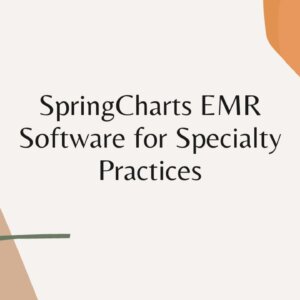A cervicogenic headache is a discomfort that originates in the neck but manifests as a headache in the sufferer || Migraine.
Secondary headaches include cervicogenic headaches. Headaches that are secondary in origin are those brought on by an underlying ailment, such as a neck injury, an infection, or extreme hypertension. They differ from primary headaches like migraines and cluster headaches because of this.
The pain of a migraine can be severe, and it is often accompanied by other symptoms such as nausea, vomiting, and sensitivity to smells, light, and sound. If a migraine is not treate, the symptoms can become so severe that the person experiencing them needs to lie down for several hours or even days. Even though there is no known cure for migraines, there are a number of effective therapies available. These treatments include drugs to relieve symptoms, medications to prevent occurrences, and changes in lifestyle that may be helpful.
Anatomy Researchers hypothesize that migraines may be produce by a nerve impulse (trigeminal nerve) that delivers messages about pain and also causes the blood vessels (arteries) that supply blood to the head to open wider (dilate) and create discomfort. This would explain why migraines are so debilitating.
Causes
Migraines are a sort of primary headache, which means that they are not brought on by an underlying medical condition. Primary headaches can range in severity from mild to severe. It is still unknown what exactly causes migraine headaches; nevertheless, experts have a strong suspicion that it is related to alterations in the functioning of the trigeminal nerve as well as specific chemical shifts in the brain.
Symptoms
Migraines can produce discomfort ranging from moderate to severe. There is a possibility that you will have pain on either side of your head. It’s possible that movement or exercise will make your pain feel even worse. It’s possible that the pain will pulse or throb. It’s possible that you have an aversion to certain smells, lights, or sounds. Before the onset of a migraine, some people have what’s know as an aura. Experiencing pins-and-needles in an arm or leg, seeing flashes of light or zigzags of light, having trouble speaking or being weak are all possible symptoms of an aura. Other symptoms, known as the prodrome, can include feelings of fatigue, irritability, depression, thirst, or energy, as well as an intense desire for sugary foods.
Diagnosis
The diagnosis of migraine head can be made by your physician after analyzing your medical history and symptoms. In order to rule out the possibility of more serious illnesses, your checkup may include imaging tests such as a CT scan or an MRI scan. It’s possible that your doctor will want you to keep a headache diary for him or her to look through.
Treatment
There are several different drugs available to assist alleviate the discomfort cause by migraines. Painkillers, either those available without a prescription or those sold over-the-counter, are use to treat migraines. In addition, your physician can recommend taking prophylactic drugs like Tapaday 200mg.
Prevention
Your physician might recommend medication to you in order to assist in the prevention of migraine. • Staying away from the triggers, like as alcohol or certain foods, that bring on your migraine is one of the most important things you can do to help prevent them.
Migraine are a type of severe headache that produce a pulsating or throbbing pain in the head.
Usually present along with the intense throbbing or pulsing feelings are
- nausea,
- dizziness,
- sensitivity to light,
- sensitivity to sound,
- and vomiting
Up to a third of migraine sufferers experience visual abnormalities or momentary blindness before the pain begins (this is known as an aura). The duration of symptoms is up to 72 hours. if left untreate, the discomfort often just affects one side of the head.
Migraines may be brought on by the following thing:
- glaring lights
- temperature, humidity, and pressure variations
- emotional angst or anguish
- beverages and foods like alcoholic beverages, chocolate, cheese, and cure meats
- female hormonal changes
- loud sounds
- leaving out food
- strong odours
- fatigue from either too little or too much sleep
- In order to shorten and lessen the intensity of symptoms, early therapy is essential.
recurring headaches
Rare but severe headaches that cycle frequently called cluster headaches. The area around one eye frequently experiences severe pain. In addition to the neck and shoulders, other parts of the head and face may also be affecte.
Prior to a period of remission, people frequently suffer from numerous headache attacks (clusters) for weeks or months.
Other cluster headache signs and symptoms include:
- a sweaty face
- Red or watery eyes and pale or flushed skin
- restlessness
- nasal congestion or discharge edoema around the effecte eye
Cluster headaches typically affect men more frequently than they do women. Although there is no establishe cause for cluster headaches, risk factors include drinking alcohol, smoking, and a family history of the condition.
Although there is no known treatment for the ailment, it is possible to lessen both the frequency and intensity of cluster headaches.
Stress Headaches
Seventy-five percent of people get tension headaches, which are the most frequent type of headache.
Although they often impact both sides of the head, some patients may only experience symptoms on one side.
Symptoms include:
- painful,
- dull discomfort
- scalp sensitivity
- shoulder and neck muscles that are achy or sore
A cervicogenic headache radiates pain that starts in the neck and back of the head to the front of the head. Cervicogenic headaches are sometimes mistaken for migraine and tension headaches, which can also result in neck pain.
Since a structural issue in the neck typically causes cervicogenic headaches, physical therapy is a successful treatment.
Physical therapists can collaborate with patients to create customise therapy plans. A physical therapist will locate the pain’s origin at the initial appointment. To ease unpleasant symptoms, they might then stimulate the soft tissue and move the joints.






